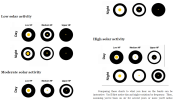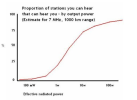Congratulations, fabric!
fabric said:
Thanks for the link, very handy! I think that is one of the things that appeal to me.
With a little bit of creative antenna work and a decent transceiver, I think one can get decent HF done without having to drop down 5k on a rig, though it is tempting ;). I'll look into the Ed Fong stuff - right now I'm looking to see if I can build me a little J-pole. Seen some links where you can put one together for under $20 and they work well. I can't really hit any repeaters with the dinky antenna that comes with my HT lol. And being in the city I don't think the neighbours will like the site of a 40ft vertical antenna 'structure' sticking out of the backyard

Well, I think HF work doesn't really depend on the rig, every rig will work nicely, new or old (unless broken or
very old). You will only need all the bells and whistles that come with the expensive transceivers if you want to participate in contests or other situations where there are a lot of strong stations around and you want to talk to very distant, weak stations (you need sophisticated filters and a very good receiver for this). Other than that, a basic trx such as the FT897 will do the trick and has built in VHF/UHF as well. Though I admit that these shiny transceivers with all those knobs are tempting indeed ;)
I think the most important parameters for HF work are band conditions, your antenna and the power you are using (in that order). There is a great e-book called "ARRL's Small Antennas for Small Spaces" (_http://www.amazon.com/ARRLs-Small-Antennas-Spaces-English-ebook/dp/B013COTZE2) which contains some good ideas for HF antennas in restricted environments.
I attached two graphs to this post that I found very helpful, both from the book "Minimum QRP: Doing more with under five watt amateur radio". The first is about band conditions - you can see the different areas of coverage (ground wave + sky wave) for the different bands (lower, medium and higher HF) under different sunspot conditions. The white represents the coverage.
The second graph is about the diminishing returns that come from using more power, based on practical experience by the author. It also reflects my own experience. Basically, the sweet spot seems to be around 20W for SSB and 5W for CW. Often, even less is sufficient. Everything that goes beyond this will give you a slight edge under difficult conditions, which can make the difference between establishing contact and failing to do so. Nothing more, nothing less.
Speaking of CW, I learned the code so that now I'm able to use it at low to medium speeds, and I found learning it to be a great exercise in willpower and concentration. It took me about a month of learning 10-20 min every day. The important thing is to really do it every day during the learning phase.
BTW, I agree re: the J-Pole - I built a portable 70cm version based on the plans that LQB shared earlier in this thread, works like a charm - thanks!
Good luck!



